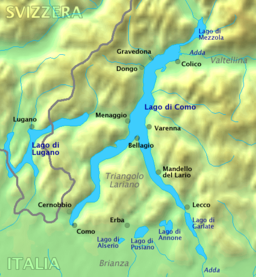
Monza is a city and comune on the River Lambro, a tributary of the Po in the Lombardy region of Italy, about 20 kilometres north-northeast of Milan. It is the capital of the Province of Monza and Brianza. Monza is best known for its Grand Prix motor racing circuit, the Autodromo Nazionale di Monza, which hosts the Formula One Italian Grand Prix with a massive Italian support tifosi for the Ferrari team.

Lecco is a city of 48,131 inhabitants in Lombardy, northern Italy, 50 kilometres (31 mi) north of Milan. It lies at the end of the south-eastern branch of Lake Como. The Bergamo Alps rise to the north and east, cut through by the Valsassina of which Lecco marks the southern end.

The Province of Lecco is a province in the Lombardy region of Italy. Its capital is the city of Lecco.

The province of Monza and Brianza is an administrative province of Lombardy region, Italy.

Brianza is a geographical, historical and cultural area of Italy, at the foot of the Alps, in the northwest of Lombardy, between Milan and Lake Como.
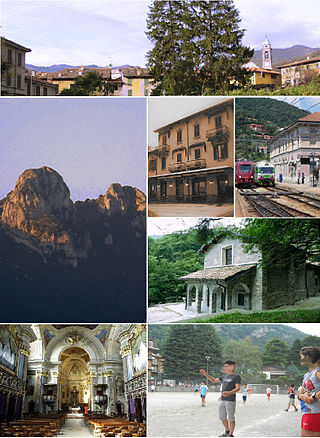
Canzo is a comune (municipality) of the Italian province of Como. It is the last town north of the historical Brianza region of Lombardy, capital of the Lake Como Triangle community and a regional tourism destination.

Colico is a town and comune in the province of Lecco, in Lombardy in northern Italy. It is situated on the northern arm of Lake Como, where the river Adda enters the lake. Colico is the largest town in the northern part of Lake Como, which is often identified as its Colico branch.

Eupilio is a comune (municipality) in the Province of Como in the Italian region Lombardy, located about 40 kilometres (25 mi) north of Milan and about 14 kilometres (9 mi) east of Como.

Pusiano is a comune (municipality) in the Province of Como, in the Italian region Lombardy, located about 40 kilometres (25 mi) north of Milan, and about 15 kilometres (9 mi) east of Como. As of 31 December 2004, it had a population of 1,225, and an area of 3.2 square kilometres (1.2 sq mi).

Annone di Brianza is a commune in the Province of Lecco, Lombardy, Italy, located about 40 kilometres (25 mi) northeast of Milan and about 9 kilometres (6 mi) southwest of Lecco. The Lago di Annone is located on its borders.

Bosisio Parini is a comune (municipality) in the Province of Lecco in the Italian region Lombardy, located about 40 kilometres (25 mi) north of Milan and about 11 kilometres (7 mi) southwest of Lecco, on the shores of the Lake of Pusiano.
Cesana Brianza is a municipality of 2,393 inhabitants in the Province of Lecco in Lombardy, about 40 kilometres (25 mi) north of Milan and 9 kilometres (5.6 mi) southwest of Lecco.
Malgrate is a comune (municipality) in the Province of Lecco, in the Italian region Lombardy. Malgrate is located across from Lecco, from which it is geographically divided by the Lake Como. According to 31 December 2004 demographic data, has a population of 4,233 in an area of 2.0 square kilometres (0.77 sq mi). It is located about 45 kilometres (28 mi) northeast from Milan, the main city in Northern Italy.

Molteno is a comune (municipality) and a hill-top town in the Province of Lecco in the Italian region Lombardy, located about 35 kilometres (22 mi) northeast of Milan and about 11 kilometres (7 mi) southwest of Lecco. As of 31 December 2004, it had a population of 3,206 and an area of 3.2 square kilometres (1.2 sq mi).
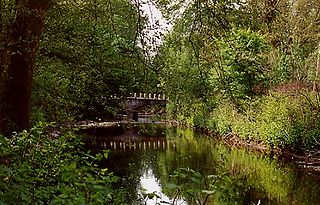
The Lambro is a river of Lombardy, northern Italy, a left tributary of the Po.

The Italian highway 36, Lake Como and Spluga is a major road in Lombardy. It provides the main access route to the Valtellina and the Swiss canton of Grisons from Milan and other cities in southern Lombardy.
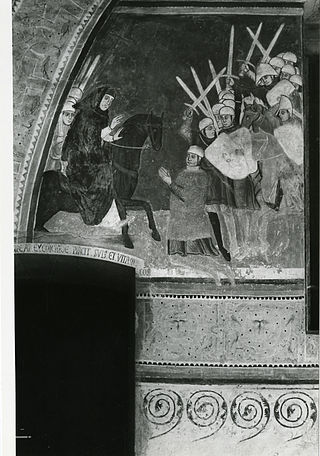
The Battle of Desio was fought on 21 January 1277 between the Della Torre and Visconti families for the control of Milan and its countryside. The battlefield is located near the modern Desio, a commune outside the city in Lombardy, Northern Italy.

Monza railway station is the main station serving the city and comune of Monza, in the region of Lombardy, northern Italy.
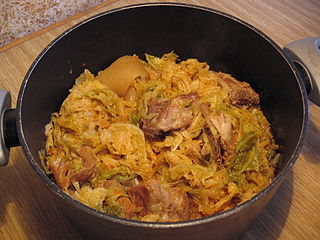
Lombard cuisine is the style of cooking in the Northern Italian region of Lombardy. The historical events of its provinces and of the diversity of its territories resulted in a varied culinary tradition. First courses in Lombard cuisine range from risottos to soups and stuffed pasta, and a large choice of second course meat or fish dishes, due to the many lakes and rivers of Lombardy.

Consonno is a ghost town and former village in the Olginate municipality of the province of Lecco, in Lombardy, northern Italy. The themed Città dei Balocchi resort was constructed at Consonno by entrepreneur and developer Mario Bagno in the 1960s and 1970s following the demolition of the previous village. After 1976 and 1977 landslides, Consonno became deserted.

